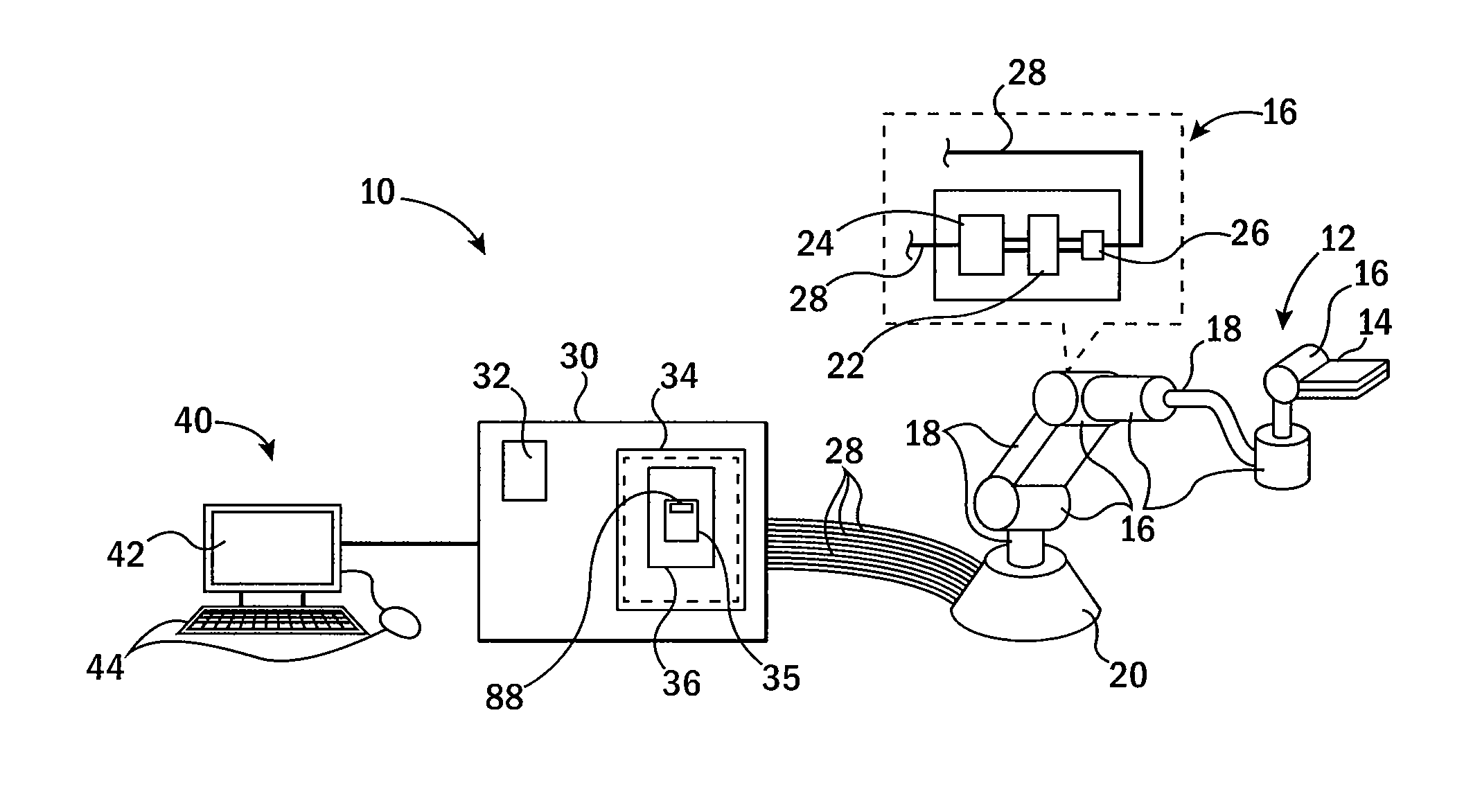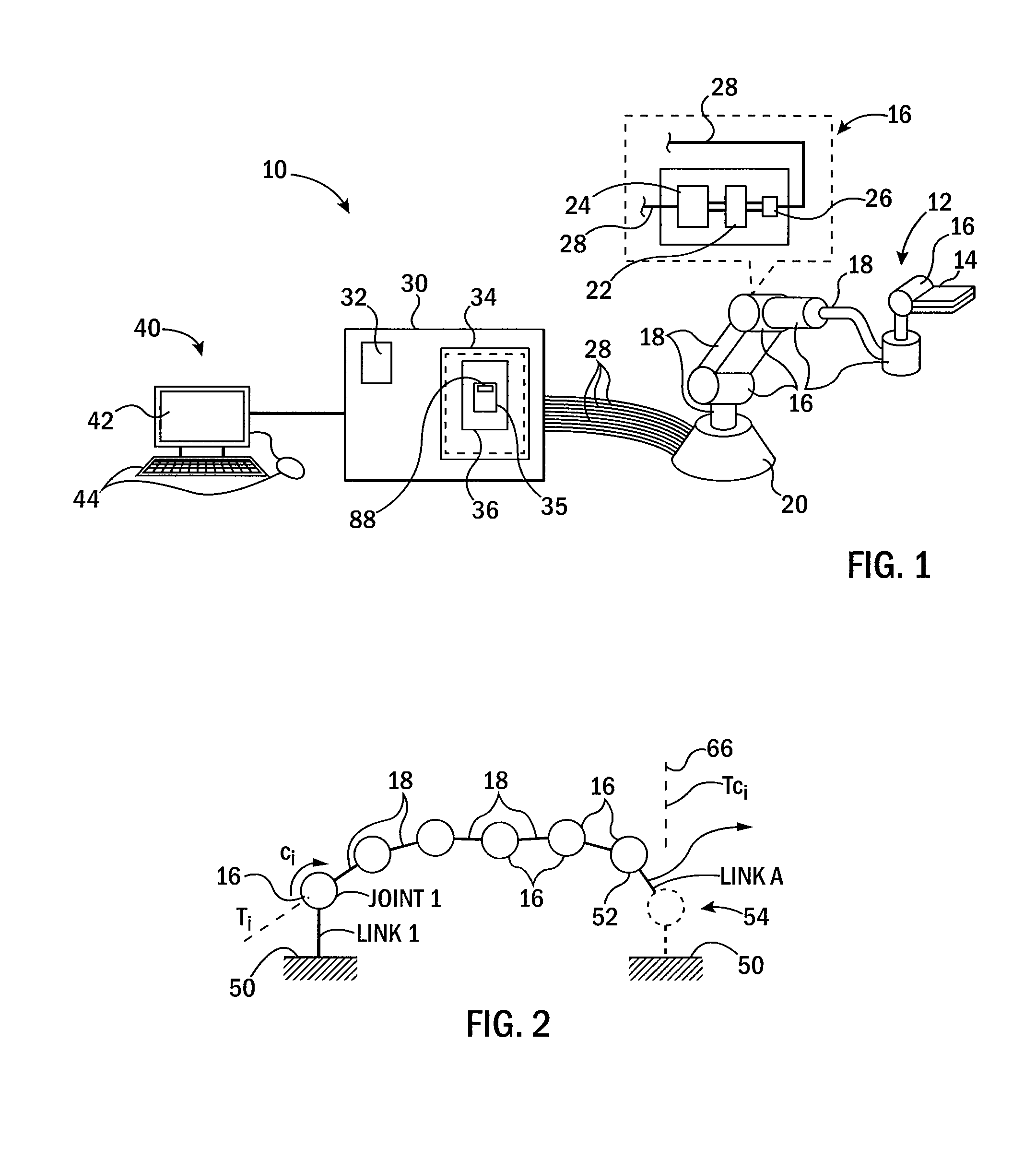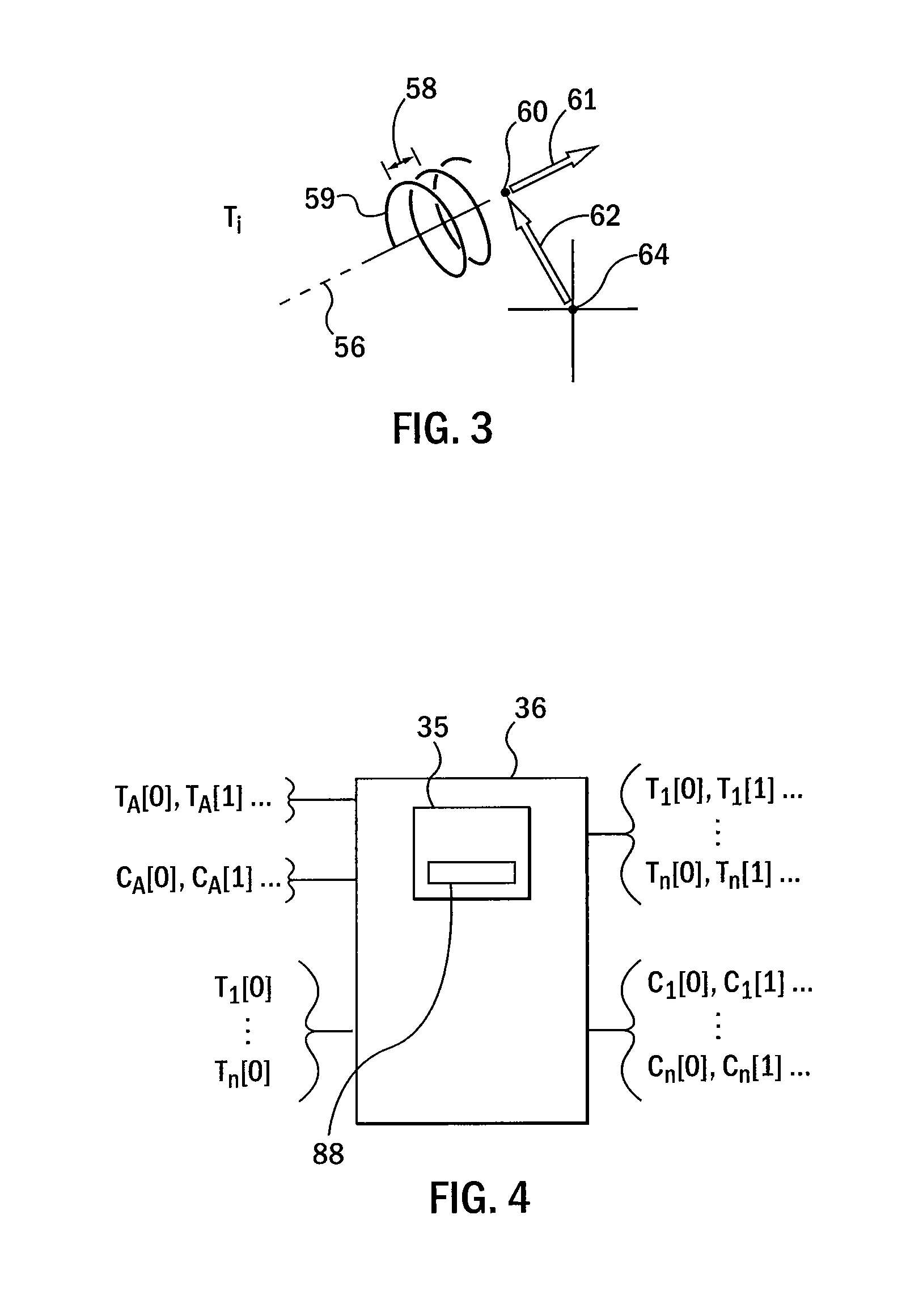Kinematic Predictor for Articulated Mechanisms
a kinematic predictor and articulated mechanism technology, applied in the field of articulated mechanism, can solve problems such as quick intractableness, and achieve the effect of simplifying the definition
- Summary
- Abstract
- Description
- Claims
- Application Information
AI Technical Summary
Benefits of technology
Problems solved by technology
Method used
Image
Examples
example i
[0060]Referring now to FIG. 7, an example articulated linkage 12 is shown providing 8 joints 16 (only joints 1-4 labeled for clarity) and associated links 18. A final effector 14 rests on top of a workpiece 100 and may, for example, be commanded to move in a circular trajectory on an upper face of the workpiece 100 to provide a polishing motion. This command may be expressed as a simple motion of a virtual ninth joint. The screw axes having initial positions Ti=Ti(0) and changing dynamically as Ti(t) over time t are depicted.
[0061]This same mechanism is abstracted in FIG. 8 to fully label each axis and to show the ninth virtual joint 54 that may, for example, define a simple circular polishing motion of the effector 14 attached to the virtual joint 54. Virtual joint 54 further closes the articulated linkage 12.
[0062]The following process solves a closed kinematic loop for power series coefficients of the “passive” subset of joint rates Ci (index i restricted to those passive joints,...
PUM
 Login to View More
Login to View More Abstract
Description
Claims
Application Information
 Login to View More
Login to View More - R&D
- Intellectual Property
- Life Sciences
- Materials
- Tech Scout
- Unparalleled Data Quality
- Higher Quality Content
- 60% Fewer Hallucinations
Browse by: Latest US Patents, China's latest patents, Technical Efficacy Thesaurus, Application Domain, Technology Topic, Popular Technical Reports.
© 2025 PatSnap. All rights reserved.Legal|Privacy policy|Modern Slavery Act Transparency Statement|Sitemap|About US| Contact US: help@patsnap.com



